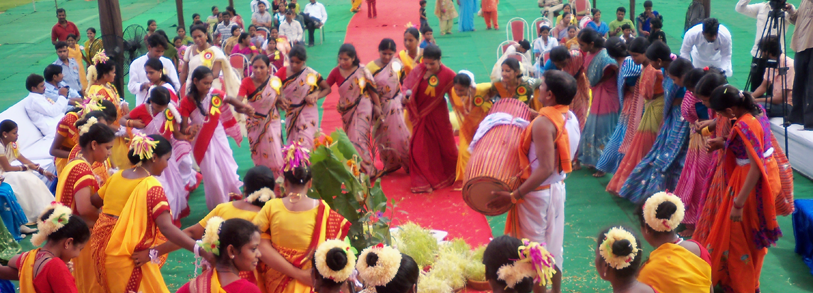Significance And Rituals of Sarhul Festival
The Indian state of Jharkhand, which earlier was a part of Bihar, is home to many tribes like Santhal, Kharia, Baiga, Kisan, Ho, Chero etc. These tribes were nomadic in the past and were fully dependent on Mother Nature for their livelihood and existence. Even today, when quite a few tribes have adopted agricultural way of life, they continue to look up to nature for blessing them with adequate rainfall, not too harsh summers and of course a plentiful harvest. Sarhul is a tribal festival of various tribes living for centuries in Jharkhand (Bihar) and in this festival Mother Nature is worshipped for getting blessing and being spared from her wrath.
Significance of Sarhul Festival
Sarhul Festival is marked with the worship of the Sal Tree which has been providing them with shelter, firewood and protection from the weather. The belief is that Mother Nature (the Sanskrit word being ‘Prakriti’) resides on this tree and hence the offerings are made at the foot of some selected Sal Trees which may be in the Jungle or within the perimeter of the settlement. These Sal Trees are called ‘Jaher’ meaning the sacred grove.
This festival comes in middle of April when the winter has gone decisively and spring has set in. The first offerings of fruits, vegetables and even paddy is made to the deity and only after the offering ceremony is over the tribal people will consume these gifts of nature. The appeasement of the deity is the most significant aspect of this festival.
Though like all festivals this Sarhul also ends with songs and dance, but not until the ceremony is over and the priest (locally called ‘Pahan’) has completed performing all the rituals. Importance of Sarhul Festival is apparent by the disciplined way of coming together for worshipping the deity and is the main aim of this festival. It is after this festival that seeds are sown with a hope that Mother Nature will gift them a bountiful harvest.
Rituals of Sarhul Festival:
This festival consist of performance of many rituals under the sacred grove of Sal Trees by the priest (‘Pahan’) duly assisted by ‘Panbhara’ or assistant of the priest. The belief is that Mahadeo or Lord Dharmesh is the controller of the universe and he is appeased by offering sacrifices of white coloured animals and birds like white goat, white fowls etc.
The main ritual starts with the washing the feet of the deity as a gesture of welcome. This act is done by the wife of the priest and after the deity has been welcomed the actual worship ceremony starts. The offerings include apart from the white animals and fowls also milk and some cotton cloth.
The offerings of the flowers of Sal Trees are later taken to the houses of the members of the tribe and kept in the homes as a mark of good luck for the family. The priest also puts some grains on the head of a chosen hen – if the hen eats the grains when they tumble on the ground it means that there will be good and adequate rainfall. Otherwise, if the hen walks away without eating them then it spells disaster.
There are many beliefs but the basic aspect is the discipline with which the members of the tribe participate and wrap up the celebrations by singing, dancing and enjoying the drink derived from processing rice with other additives. This practice has lasted for centuries and is going strong till today’ in fact other parts of North Eastern India are also adopting the rituals where Sal trees grow in abundance.








